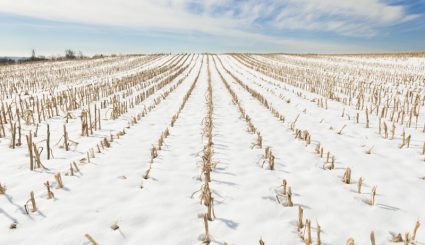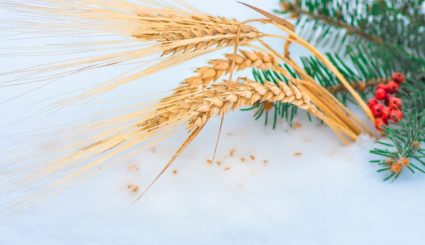Smart From The Start: Celebrating 20 Years of ESN

With new crop input and fertilizer products coming out all the time, we at Nutrien take pride in sharing that ESN® SMART NITROGEN® has been in the field in broadacre agriculture for 20 years. To celebrate 20 years of ESN history and look ahead to the future, we’re sharing a few little-known facts about the development of ESN.
Press play on our 20th anniversary playlist to be instantly transported back to 2001.
The beginning
The first field studies of ESN were recorded in the U.S. and Canada in 1998, with the first patent for ESN granted in 2001. ESN’s commercial introduction took place in 2003.
Alan Blaylock, ESN senior agronomist at Nutrien, has been working with ESN since its inception.
“The objective of the first trials was to identify if controlled-release nitrogen, a technology that had already received acceptance in turf and specialty markets, could provide sufficient value to the grower to justify expansion of production, distribution and marketing to broadacre commodity crops,” Blaylock says.
“The hypothesis was that controlled release could provide, or replace, with one application what conventional BMPs were doing with multiple applications – to simplify N management while providing an economic return that would be attractive on commodity crops.”
ESN’s first customers

“ESN was first sold to corn and wheat growers in Michigan, Indiana, Illinois and Ohio,” Blaylock says. “Within a couple of years, we began to spread across the Corn Belt, with the primary targets still corn and wheat and a few users on potatoes. Use on food crops in Canada was approved in the mid-2000s.”
Today, ESN is used broadly across the U.S. and Canada but maintains its strong position in the northern Corn Belt.
Has ESN changed in 20 years?

“The coating formulation of ESN and coating processes have evolved some over the last 20 years,” Blaylock says. “There were some changes to coating processes early on, and some important changes to the formulation, but by 2005, we were designing our first full-size ESN plant and ‘locked in’ the formulation for plant design. Since then, there have been process improvements for cost control and product quality as we continue to try to make ESN better, but the coating is similar to the original. Through all these years, we have continued to conduct field research on ESN to evaluate ESN use in new crops and geographies, refine recommendations for changing grower management practices, and demonstrate ESN’s value to potential new customers.”
As growers continue to face extreme weather events, they continue to rely on ESN for insurance against nitrogen loss (volatilization, denitrification, leaching). The last 20 years have brought many more enhanced efficiency fertilizer choices to the market, but ESN continues to stand the test of time as the first, the best, and a leader in the EEF category.
Celebrate with us!

Tweet us @SmartNitrogen how many years you’ve been using ESN in your fields – whether you tried it for the first time last year or you’ve been with us since the beginning. We thank you for being part of our legacy and our future.
To learn about ESN’s composition and the controlled-release difference, watch this video.
For ESN use recommendations, including proper handling and application procedures, click here.


